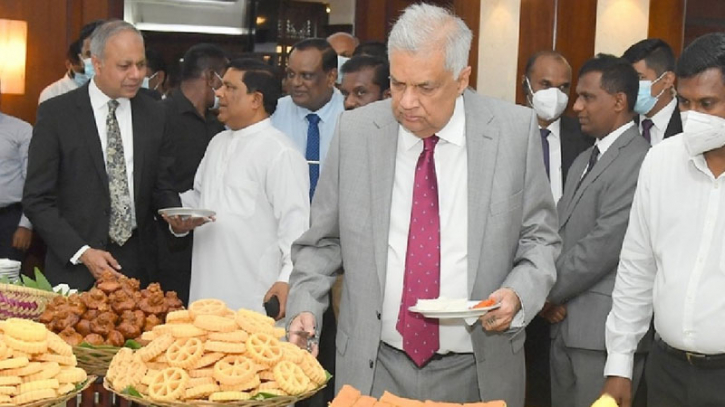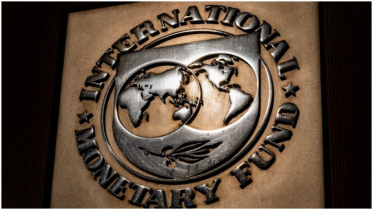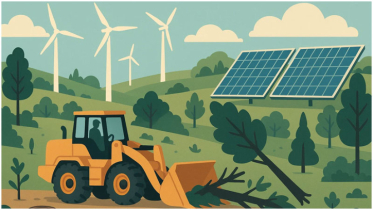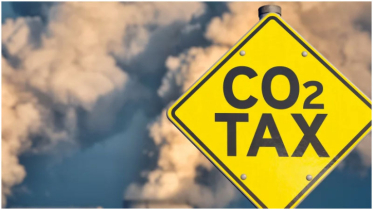Sri Lanka returning to normal

With the country's falling foreign exchange reserve, rising inflation and value of local currency taka eroding fast against the US dollar, the fear was once deepening in public mind if Bangladesh would follow in Sri Lanka's footsteps, towards an economic meltdown. In economy and finance, in particular, public confidence in the existing order is important. That Sri Lanka's economy was not performing well was quite evident from the long queues to get food, medicine and fuel in the scorching tropical sun of the island nation as prices of those essential commodities went through the roof. The food price inflation reached 94 per cent in September last year and year-on-year inflation rose to 69.8 per cent.
But what matters to the average person is not abstract figures of inflation, consumer price index or forex reserve situation in the central bank. What they want to see is that the political leaders in the government are honestly doing their best to tackle the crisis. But the government of Gotabaya Rajapaksa failed them in that respect miserably. The Central Bank of Sri Lanka (CBSL) which needed to play the central role in bringing down inflation rate failed, too. Thus pushed to the wall, the angry public turned into a mob, took to the streets in large numbers and there was total chaos.
So, what happened next? Did Sri Lanka fall in the black hole of economic collapse irretrievably? Not in the least. The government of president Ranil Wickremesinghe that took over following the ouster of his predecessor and Nandalal Weerasinghe at the helm of the CSBL, things have been turning around. The streets of Colombo no longer give a deserted look like they did only a year back. The busy traffic is back. Tourists have returned. In fact, tourism, which is the main source of the country's foreign currency earning and was hard hit by the pandemic, is fast recovering. According to reports, compared to last year, the sector's revenue earning has seen a jump by 30 per cent. What is most striking and the main factor behind restoration of the public's trust in the country's economy is the dramatic fall in the rate of inflation. In August, it was down to 4.0 per cent from 6.3 per cent in the previous month of July. Not to mention what the rate of inflation was just a year back! What is more, the country is paying back its debts. It has, for instance, already paid back 75 per cent of the loan of USSD200 million it took from Bangladesh just two years back. At first, the amount of loan in foreign currency that was to be provided to Sri Lanka in exchange for an equivalent amount of rupee (Sri Lanka's currency) was USD250 million. But in the face of worsening economic crisis of that country, the amount was later reduced to USD200 million. With its economy already in a tailspin, many including economists at that time were very doubtful if that country would ever be able to pay the loan back. But the doomsayers have proved to be wrong. The country has surprised all by not failing in its commitment to its creditors.
How has that miracle happened? Many would like to give the credit to the country's central bank governor who has been given the charge of steering the country through its financial collapse. Perhaps, he is doing his job well. But earlier he was sent into retirement for his critical view of the then president's (Gotabaya Rajapakse's) unorthodox policy of big tax cuts, printing huge quantities of money, arbitrarily controlling the exchange rate of rupee against US dollar as well as the interest rates. The idea was that the steps would spur growth. Nandalal, as the second person in the CBSL hierarchy at that time, was sensing danger and predicted the impending crisis. But the government of that time was not ready to accept any criticism. Nandalal was enjoying a life of retirement in Australia. Meanwhile, both the government and the economy of Sri Lanka collapsed. Ranil Wickremesinghe, then in charge of the country, asked him (Nandalal) to return home and take charge of CBSL. The country was then defaulting on its foreign debt worth USD46 billion. Sri Lankan rupee had gone into a free fall against the US dollar. Flow of inward remittances from its expatriate workers abroad was also tapering off. The foreign currency reserve dipped to all time low. The GDP of the economy shrunk by 7.8 per cent.
But now the CBSL governor is hoping to reduce the GDP contraction by 2.0 per cent this year. If it turns out to be so, returning back to normal will be just a matter of time. The bank interest rate has also been gradually brought down to help growth. But to achieve this, the country had to do it the hard way. Ranil Wickremesinghe has been able to throw a lifeline to the economy by securing an IMF loan of USD2.9 billion tied to strict conditions of reforms of the country's economy and governance. Restructuring domestic debt is also on the agenda. But pensioners have meanwhile taken to the streets to protest against the move for obvious reasons. Meanwhile, subsidies on about everything from foods to utility bills have been withdrawn. Power tariff as a result has increased by 65 per cent. Personal income tax has gone up by 36 per cent. Poverty level has increased. Still 70 per cent of the public's earnings are spent to buy food.
The IMF-dictated reform measures are being punishing for the salaried people, the wage earners and the working people in general.
But since the country's foreign debt situation is improving, hard currency from remittance and tourism is flowing back and business prospects are looking up, Sri Lankans would like to keep their fingers crossed.
Bangladesh may take heart from Sri Lankan experience.
Source: The Financial Express
.png)




